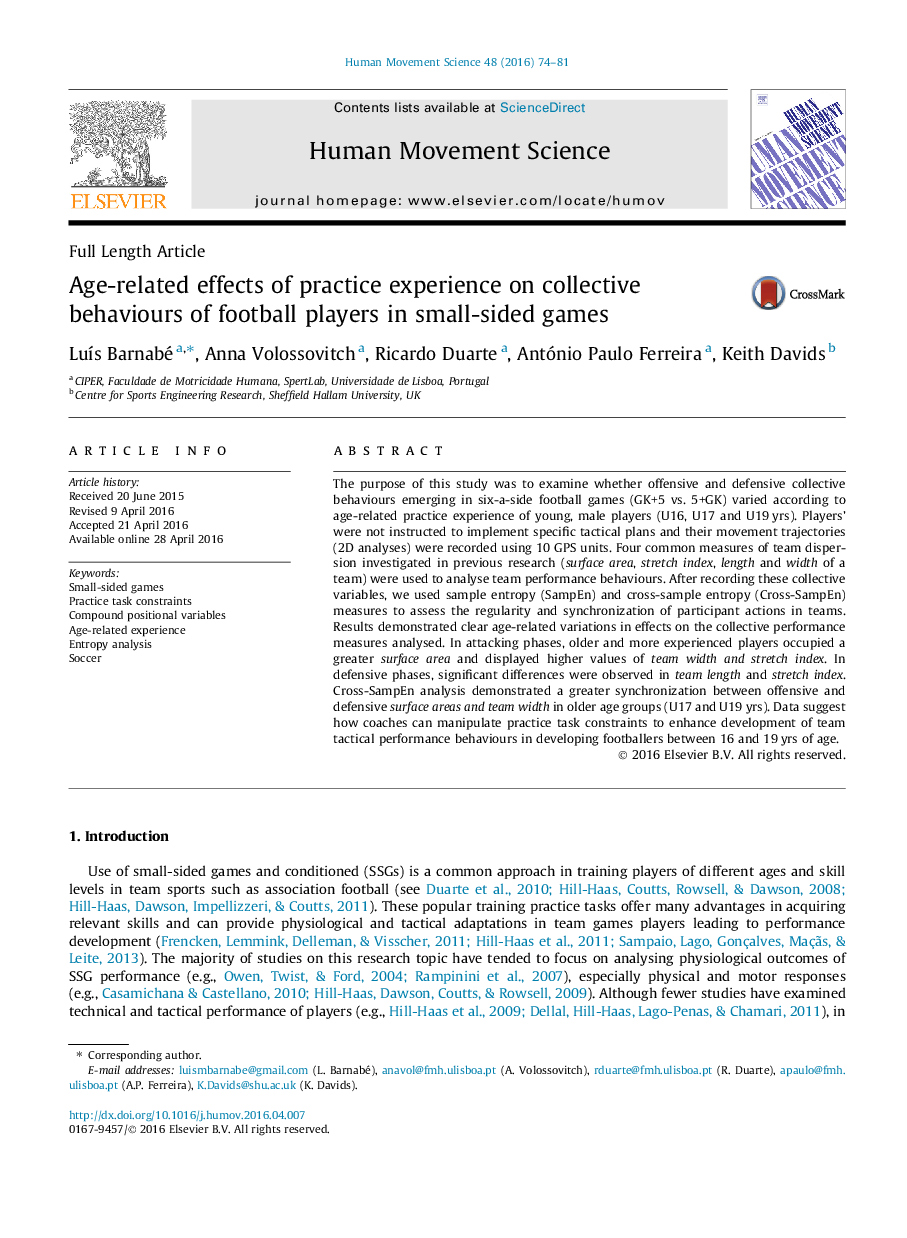| Article ID | Journal | Published Year | Pages | File Type |
|---|---|---|---|---|
| 928187 | Human Movement Science | 2016 | 8 Pages |
The purpose of this study was to examine whether offensive and defensive collective behaviours emerging in six-a-side football games (GK+5 vs. 5+GK) varied according to age-related practice experience of young, male players (U16, U17 and U19 yrs). Players’ were not instructed to implement specific tactical plans and their movement trajectories (2D analyses) were recorded using 10 GPS units. Four common measures of team dispersion investigated in previous research (surface area, stretch index, length and width of a team) were used to analyse team performance behaviours. After recording these collective variables, we used sample entropy (SampEn) and cross-sample entropy (Cross-SampEn) measures to assess the regularity and synchronization of participant actions in teams. Results demonstrated clear age-related variations in effects on the collective performance measures analysed. In attacking phases, older and more experienced players occupied a greater surface area and displayed higher values of team width and stretch index. In defensive phases, significant differences were observed in team length and stretch index. Cross-SampEn analysis demonstrated a greater synchronization between offensive and defensive surface areas and team width in older age groups (U17 and U19 yrs). Data suggest how coaches can manipulate practice task constraints to enhance development of team tactical performance behaviours in developing footballers between 16 and 19 yrs of age.
